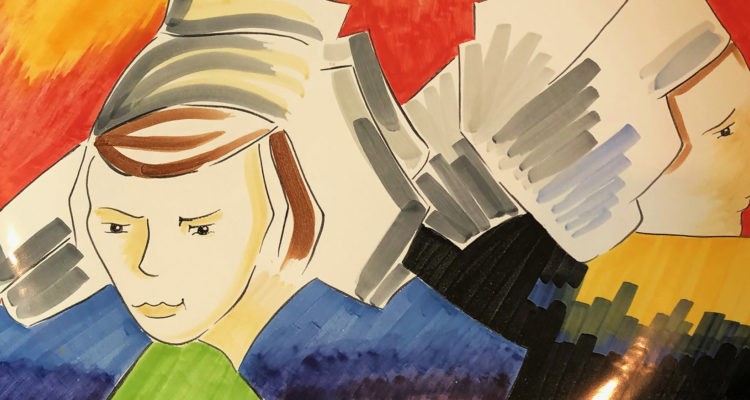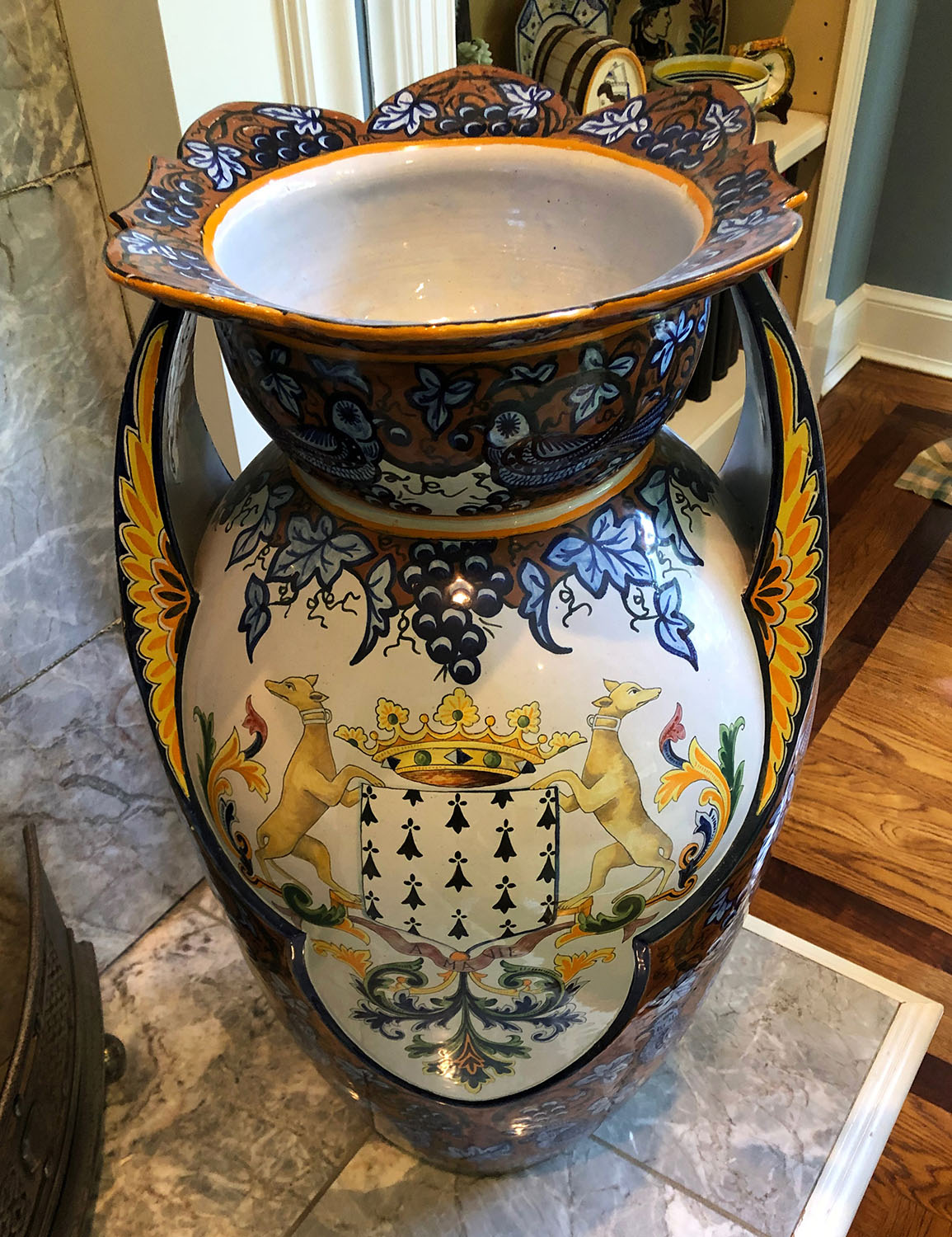Well-crafted and exceptionally hand-painted pottery pieces inspired one local woman to establish an impressive collection of the French pottery known as Quimper.
Story and Photos by Ann Butenas
Upon entering the formal living room of Prairie Village resident, Sharon Borthwick, one feels as if they have walked into an exclusive private collection of some of the most exquisite pottery pieces in the world. While other parts of her home give residence to many pieces in what may be the largest collection of the famed Quimper French pottery in the city (around 200), this particular room is a veritable museum, holding some of the most admirable pieces of art one has ever seen.
While new pottery is still made today, Quimper (pronounced kem-pair), has a respected history that dates back to 1685. Quimper is the city in France in which the pottery, technically called faience, is created. The pottery can only be referred to as Quimper if it comes from this place.
The primary ingredients needed to create this type of pottery are elements of water, earth and fire. The clay comes from the river Odet and is formed, hand painted and then glazed. The most common images on the pieces are of peasants depicting every day life scenes.
Borthwick was initially introduced to Quimper when she serendipitously stepped into a boutique on the Plaza 35 years ago.
“I bought a pretty little bowl with a traditional man and woman on it and used it to hold fruit,” recalled Borthwick. “One of my kids broke it, so I went back to the store and saw a similar bowl but the price was quite high.”
Borthwick inquired of the shopkeeper about the price, who informed her the piece she originally purchased was a knock-off. This one, however, was the real deal.
“I did not buy that expensive bowl at the time, but I sure did get my education about the pottery then,” she said.
As her interest gained velocity, Borthwick scoured the metro area for more pieces. However, there just was not a large offering, outside of the occasional estate sale. As such, she acquired the majority of her pieces from her travels around the country and to France. On one of her first visits to France, she visited the factory and obtained a few pieces while there.
“I prefer the older pieces from about 100 to 200 years ago,” she noted, referring to one of the initial pieces she obtained – a cider jug, made in the 1700s.
What Borthwick likes about the pieces include the history behind them, the uniqueness of each item and the colors. The color palette associated with Quimper pottery typically involve copper green, cobalt blue and violet manganese, with other pops of color sprinkled in for good measure. Each piece is single-handedly painted by a highly-trained and educated artist with a strong focus on exceptional craftsmanship.
Borthwick has attended numerous Quimper conventions across the country and in France and hosted one of her own here in Kansas City five years ago. Over 100 collectors from around the country stayed at a local hotel and gathered to share their own stories and passion for Quimper.
Among Sharon’s most notable pieces include an abbey with miniature villagers in a wedding processional; a violin; a large vase; tea cups; serving platters; and even asparagus bowls, which have built-in drains for the excess water to run off. Each piece seems to tell its own unique story, making her collection quite the page-turner.
While Borthwick is no longer actively seeking to expand her collection, she is not completely opposed to making a bit more room on her shelves.
“If I am going to get another piece, it will have to be really unusual,” she smiled.









